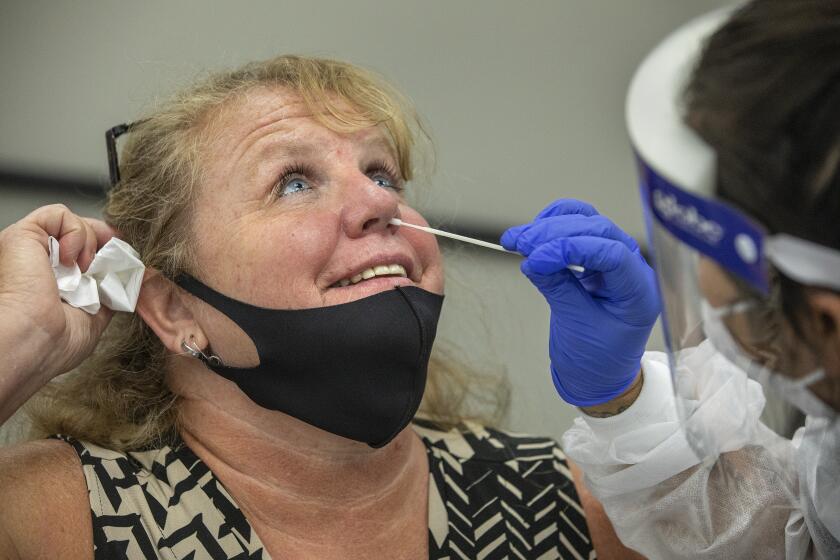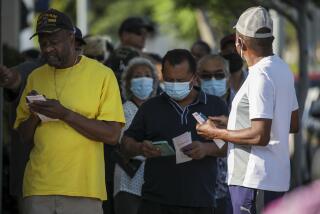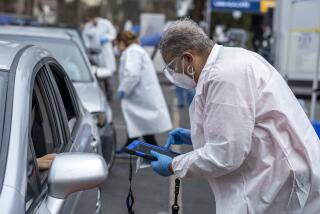Orange County COVID-19 deaths top 1,000 even as new cases start to stabilize statewide
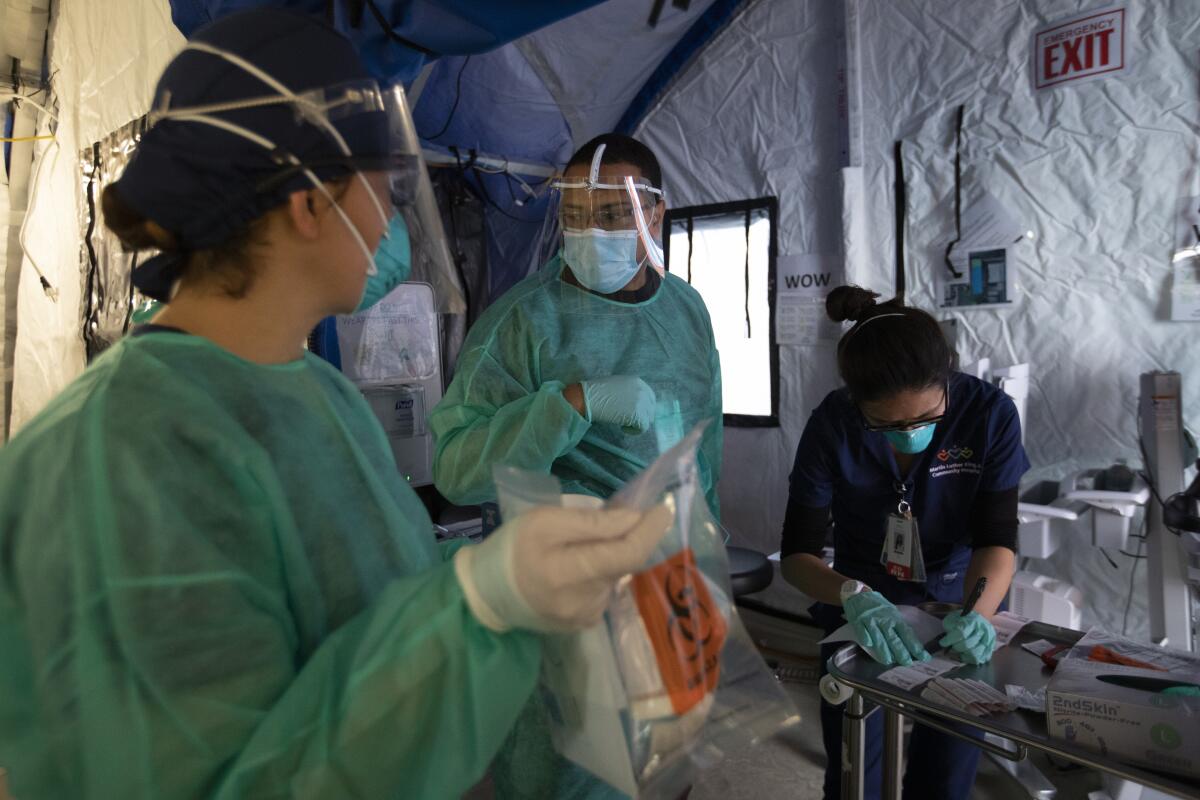
Reported COVID-19 deaths in Orange County topped 1,000 this week as fatalities continue to rise throughout the state in response to the summer surge of coronavirus infections, even as cases statewide start to stabilize.
On average, people who succumb to the disease die 28 days after being infected, said Dr. John Swartzberg, a UC Berkeley infectious disease expert. As new infections continue to decline, deaths also will fall off in the weeks ahead.
Orange County’s total pandemic death toll reached 1,018 reported deaths on Thursday. Dr. Margaret Bredehoft, the county’s deputy director of public health services, called the number “a tragic milestone.”
Despite the grim number, Orange County health officials said that if coronavirus case rates continue to fall, the county could transition to the state’s less-restrictive red tier on Sept. 8. That would allow more businesses to resume indoor operations, though health officials cautioned that they would keep a close eye on those operations.
“As we reopen and think about reopening businesses, the biggest concerns and areas that we want to think about supporting are things that are indoors, whether it’s indoor malls, indoor dining” Bredehoft said. “Those are the areas of the largest concern for us.”
Schools may be eligible to reopen campuses as soon as Sept. 22. The decision on whether or not to reopen is up to individual school districts.
“Schools are not forced to open,” Bredehoft said. “They’re eligible to open with the caveat that they also provide options of either remote virtual learning as well as a hybrid form.”
She said schools should be prepared to reopen safely and “not jump into reopening if they’re not ready.” The county is reporting 5.6 daily new cases per 100,000 people and a positive test rate of 5%, Bredehoft said. There have been a total of 48,945 coronavirus cases in the county.
The San Francisco Bay Area also reported an unfortunate new maker this week. The nine counties in the region had their highest single-day death toll — 30 — on Wednesday, according to data complied by The Times. Since the start of the pandemic, the region has suffered a reported 1,167 deaths from COVID-19.
The latest figures from the state showed a total of 717,177 cases as of Wednesday, up 5,125 from the day before. The California dashboard also reported a total of 13,327 deaths, up 164 from those reported Tuesday.
The state says 15,480 children under the age of 5 have been infected. None have died. There have been three deaths among those age 5 to 17, 194 among people 18 to 34 and 749 deaths among residents 35 to 49.
All drive-through testing sites run by the city will be closed over the 3-day weekend, but a few pop-up testing events will be held Friday and Saturday.
Older residents have been fatally stricken in greater numbers. Of those infected between the ages of 50 and 59, 1,360 have died. As ages progress, so have deaths. The state reported 5,422 deaths among people 80 and older.
Los Angeles County has averaged 989 new cases and 26.7 new deaths a day over the past week, according to The Times’ coronavirus tracker, with the number of confirmed infections doubling every 150.5 days.
Los Angeles County Chief Medical Officer Dr. Jeffrey Gunzenhauser urged residents Thursday not to assume that reopening was a license to violate health guidelines. He said people who take a new risk, such as going to work, should try to reduce the risk of contracting the disease somewhere else, such as in social interactions.
During an online news conference, Gunzenhauser said the county was working to resolve about 800 active outbreaks, many at worksites, and reporting roughly 1,000 new COVID-19 cases on most days. Because many people don’t get tested, the actual number of daily new cases could be 5,000, he warned.
The county on Thursday allowed hair salons and barbers to open for inside services, with limitations, a reopening Gunzenhauser said would be carefully monitored.
“There is still a lot of virus here in L.A. County,” he warned.
Riverside County has averaged 225 new cases and 5.1 new deaths per day over the past week, according to The Times’ coronavirus tracker. In San Bernardino County, there have been an average of 263 new cases and four deaths a day.
San Diego County has reported an average of 232 new cases and 3.1 new deaths a day.
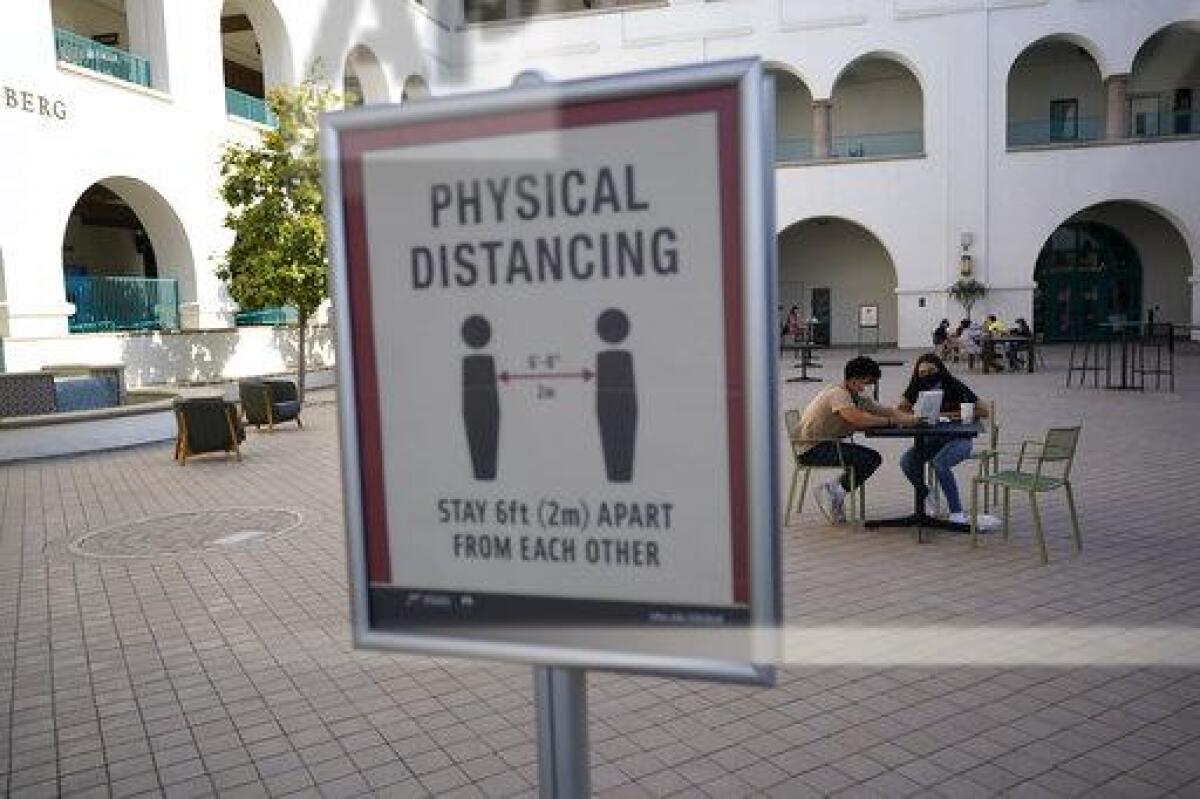
Last week, California announced a new colored-coded system that will determine reopening in counties. Those in the purple category, including Los Angeles and Orange counties, face the most restrictions. Purple means widespread risk, red substantial risk, orange moderate and yellow minimal risk. Each tier determines what can reopen.
A county must remain in a tier for three weeks before it can progress to a new level, and only if it has met its tier’s requirements for two consecutive weeks. The new system replaced the former county watch list.
Swartzberg said the color tiers were an improvement. The old system created a lot of confusion, he said, and “something needed to be done.”
“Whenever you see something that is simpler, it is usually better,” the infectious disease expert said in an interview. He said he appreciates that the new system gives counties credit for doing a lot of testing.
“So those counties that aren’t doing sufficient testing get penalized, and those doing a lot of testing get credit for that,” he said. “That is smart. It puts the incentives in the right place.”
San Francisco, which is both a city and county, is now in the red zone, despite relatively high case numbers. Those numbers were adjusted to reflect the fact that San Francisco was doing more testing than most other counties in the country.
More to Read
Sign up for Essential California
The most important California stories and recommendations in your inbox every morning.
You may occasionally receive promotional content from the Los Angeles Times.
